Hand-processed fillets
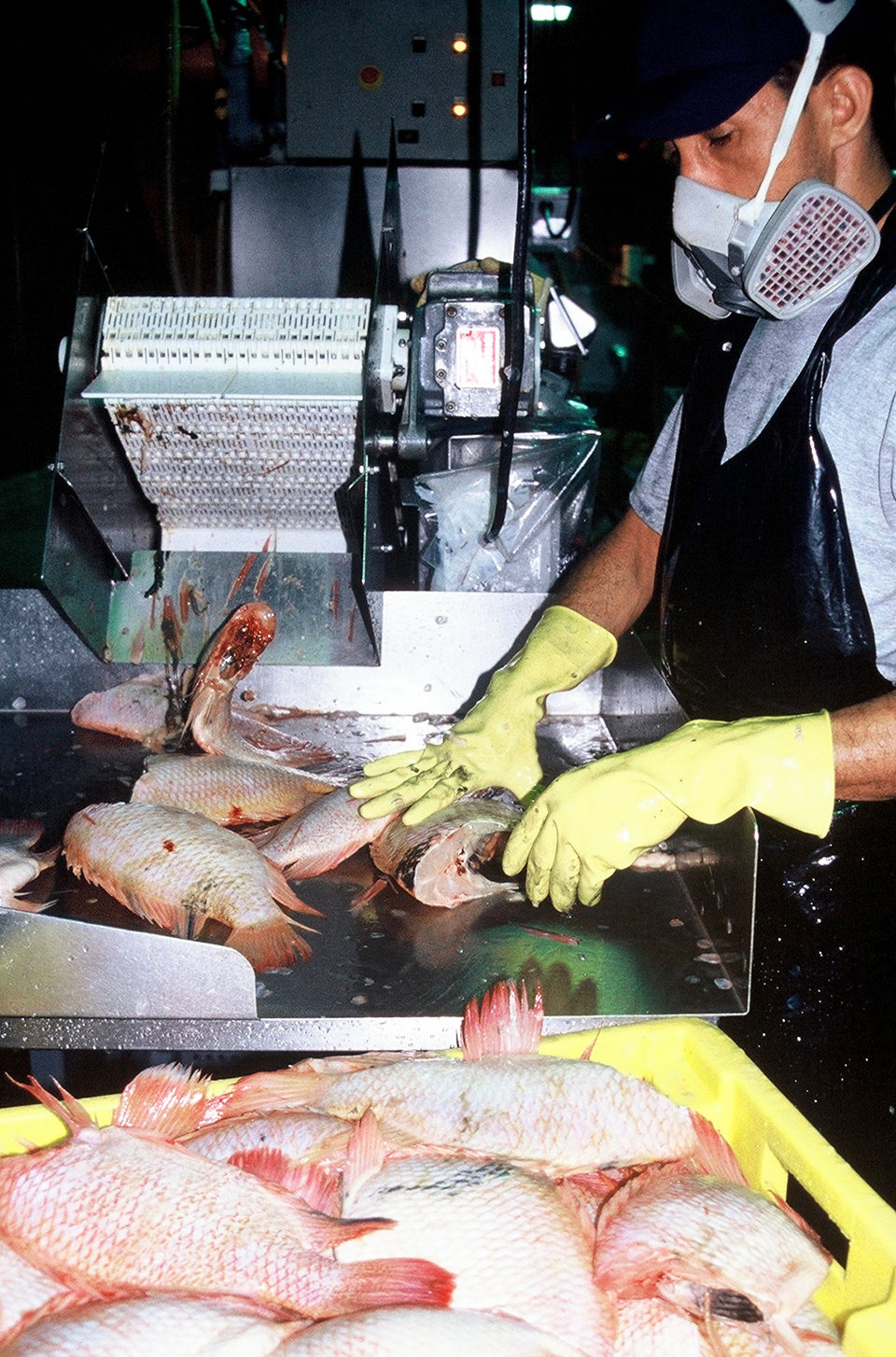
Tilapia can be cut by hand or with automated filleting equipment. The decision regarding which system is better is dictated primarily by the cost of labor and the throughput of fish to be filleted.
The author calculated the cost of producing fillets for both a hand-cut and an automated facility. In both cases, it was assumed the fish were owned by the processing facility, and no cost was ascribed to the whole fish. It was also assumed that costs associated with bookkeeping at the processing facility were handled by the fish production facility, and that no accountant was needed at the processing facility.
This article reports on the costs of hand filleting. The costs of using an automated filleting system will appear in Part III of the series. This work reported was made possible with financial support from the Federal-State Marketing Improvement Program of the Agricultural Marketing Service, U.S. Department of Agriculture.
Facility requirements
A hand-cut facility requires a receiving area where fish are bled, an area for cutting and packing, a cold storage area for finished product and a freezer for storing fish offal prior to disposal. In addition, restroom facilities, a break room for employees and office space for the facilities manager are needed. With the exception of the office, restrooms and break room, all areas must be constructed of materials that are easily cleaned to prevent bacterial growth. Cement floors should slope toward a center trough drain in each room. Walls and ceilings should be constructed of a smooth, scrubbable material.
Sinks for employee hand washing must be readily available in both the cutting room and the bleeding room. Other considerations include adequate area for a forklift to move product in and out of the storage areas, and a shipping/cargo door through which fish can be received and fillets can be shipped.
Assumptions
The following assumptions were used to estimate the cost to hand fillet tilapia:
Labor costs, cutting capacity
Labor is expected to be the largest expense in filleting. The salaries required to maintain a skilled workforce will vary from location to location. Also, as with most tasks, a cutter’s speed and yield efficiency increase with practice. Starting workers on an hourly wage during training and then moving to an incentive pay scale, where the employee is paid as a function of both the rate at which fish are cut and the resulting yield, should help develop a skilled and motivated workforce capable of a high level of performance.
It is anticipated that an experienced cutter can process 1.25 lb (0.57 kg) of tilapia (whole weight)/minute while achieving a 30 percent yield. Assuming an eight-hour workday and 50 minutes of work/hour, this corresponds to 500 lb (227 kg) fish/cutter/day. Based on a 30 percent yield, the resulting fillet weight would be 150 lb (68 kg)/cutter/day.
Employee costs
Eight cutters are required for the cutting operation. Three additional employees are responsible for receiving and bleeding fish, packaging fillets and cleaning the facility. The rate of compensation for the employees was set at U.S. $13/hour for trained cutters and $12/hour for the other three employees.
All employees were assumed to receive a benefits package equaling 24 percent of their wages. The operating schedule was assumed to be eight hours a day, five days a week, plus a two-hour cleaning each day. This would correspond to processing 1 million lb (453 mt) whole tilapia/year, assuming a cutting rate of 1.25 lb (0.57 kg) whole fish/minute.
Equipment costs
The required equipment and associated costs are presented in Table 1. The building cost for this analysis was assumed to be U.S. $250,000. Useful life was assumed to be 20 years for both building and equipment.
Flick, Anticipated equipment, Table 1
| Item | Number Required | Cost (U.S. $) |
|---|---|---|
| Ice machine | 1 | 9,800 |
| Freezer room, 3.05 x 3.66 m | 1 | 7,500 |
| Cold storage room, 4.88 x 5.79 m | 1 | 5,025 |
| Cutting tables | 6 | 1,800 |
| Three-bay sink, sideboards | 1 | 900 |
| Two-bay sink, sideboards | 1 | 500 |
| Pre-rinse faucets | 6 | 800 |
| Hand sink | 1 | 450 |
| Receiving tanks | 3 | 2,000 |
| Bleeding tanks | 3 | 2,000 |
| Knife sharpener | 1 | 825 |
| Scales | 2 | 800 |
| Pallet jack | 2 | 600 |
| Additional equipment | 2,000 | |
| Other supplies | 1,000 | |
| Computer | 1 | 1,500 |
| Handling bins | 20 | 100 |
| Trolleys | 4 | 800 |
| Insect killers | 2 | 200 |
| Total | 38,600 |
Financing costs for both building and equipment were 5 percent annually. Monthly utility costs were assumed to be U.S. $500 for electric power, $500 for water and sewer, and $100 for telephone service.
Insurance, other costs
Insurance costs were assumed to be U.S. $6,000/year for general liability and $6,000/year for workman’s compensation. Annual property taxes were $1,000. Waste disposal, consisting of weekly offal pickup by a rendering service, was estimated at $300/month.
The fillets will be packaged in 10-lb (4.54-kg) boxes, which are assumed to cost U.S. $2.50/box. This is the only cost that fluctuated depending on the number of fish cut per day. Cleaning and miscellaneous supplies were estimated at $400/month.
Sensitivity analysis
While all assumptions regarding input costs affect the calculated cost to produce a fillet, the analysis is most sensitive to three variables: labor costs, the rate at which fish are cut and the cutting efficiency.
To characterize the sensitivity of cost to these three variables, the analysis de-scribed above was repeated for all combinations of high, medium and low values of the three variables. Cutting rates of 1.00, 1.25 and 1.50 lb/hour (0.45, 0.57 and 0.68 kg/hour); yield efficiencies of 0.28-, 0.30- and 0.32-lb fillets/lb whole fish (0.13-, 0.14- and 0.15-kg fillets/0.45 kg fish); and labor costs of U.S. $10, $12 and $15/hour were considered. It was assumed that these variables only affected the cost of production in terms of packing costs, and no other costs were af-fected by the volume of fillets produced.
Cutting efficiency and cutting rate affected the cost to produce a fillet because these factors directly affected the number of fillets produced, spreading the cost of production over a varying number of fillets. The monthly production costs – assuming the “average” labor costs, a cutting rate of 1.25 lb (0.57 kg)/minute and a cutting efficiency of 30 percent – are shown in Table 2. With these assumptions, the filleting cost was U.S. $1.62/lb ($3.57/kg). It should be noted that this number did not include the cost of the fish, but represented just the cost to cut a tilapia to produce a boneless, skinless fillet.
Flick, Monthly production costs, Table 2
| Cost Item | Monthly Cost (U.S. $) |
|---|---|
| Labor – Eight cutters @ U.S. $13/hour | 17,333.00 |
| Fringe on cutters | 4,160.00 |
| Labor – Three additional @ U.S. $12/hour | 6,000.00 |
| Fringe on additional labor | 1,440.00 |
| Total labor + fringe | 28,933.00 |
| Packing costs | 6,250.00 |
| Cleaning/miscellaneous supplies | 400.00 |
| Total cost of labor + goods | 35,583.00 |
| Loan payment principal | 1,202.50 |
| Loan payment interest | 1,202.50 |
| Utilities | 1,100.00 |
| Insurance | 1,000.00 |
| Waste disposal | 300.00 |
| Property taxes | 83.33 |
| Total overhead | 4,888.33 |
| Total monthly costs | 40,471.00 |
| Monthly production (lb fillets) | 25,000 |
| Monthly production (kg fillets) | 11,340 |
| Cutting cost/lb fillet | 1.62 |
| Cutting cost/kg fillet | 3.57 |
Table 3 presents the costs to cut a tilapia fillet assuming various labor rates, cutting rates and cutting efficiencies. The costs range from a low of U.S. $1.09 for the lowest labor and highest cutting rate and efficiency to $2.30 for the highest labor rate and lowest cutting rate and efficiency. Clearly these factors have a large influence on fillet costs.
Flick, Cost of fillets produced, Table 3
| Fillet Production (lb/month | Yield (%) | Cutting Rate (lb/minute) | Fillet Cost/lb for 3 Labor Rates High | Fillet Cost/lb for 3 Labor Rates Medium | Fillet Cost/lb for 3 Labor Rates Low |
|---|---|---|---|---|---|
| 18,667 | 28 | 1.00 | $2.30 | $2.08 | $1.68 |
| 20,000 | 30 | 1.00 | $2.16 | $1.96 | $1.59 |
| 21,333 | 32 | 1.00 | $2.04 | $1.85 | $1.51 |
| 23,333 | 28 | 1.25 | $1.89 | $1.72 | $1.40 |
| 25,000 | 30 | 1.25 | $1.78 | $1.62 | $1.32 |
| 26,667 | 32 | 1.25 | $1.68 | $1.53 | $1.25 |
| 28,000 | 28 | 1.50 | $1.61 | $1.47 | $1.21 |
| 30,000 | 30 | 1.50 | $1.52 | $1.39 | $1.14 |
| 32,000 | 32 | 1.50 | $1.44 | $1.32 | $1.09 |
Perspectives
This analysis demonstrated the cost to cut tilapia in areas where labor rates are high. Remember, these costs do not include the cost of the fish, only the processing cost to cut. Given these costs, it is difficult for small-scale aquaculture producers in countries with high labor costs to effectively compete with products from countries where labor costs are significantly less.
(Editor’s Note: This article was originally published in the May/June 2012 print edition of the Global Aquaculture Advocate.)
Author
-

George J. Flick, Jr., Ph.D.
Food Science and Technology Department
Virginia Tech/Virginia
Cooperative Extension (0418)
Blacksburg, Virginia 24061 USA[117,100,101,46,116,118,64,103,107,99,105,108,102]
Tagged With
Related Posts
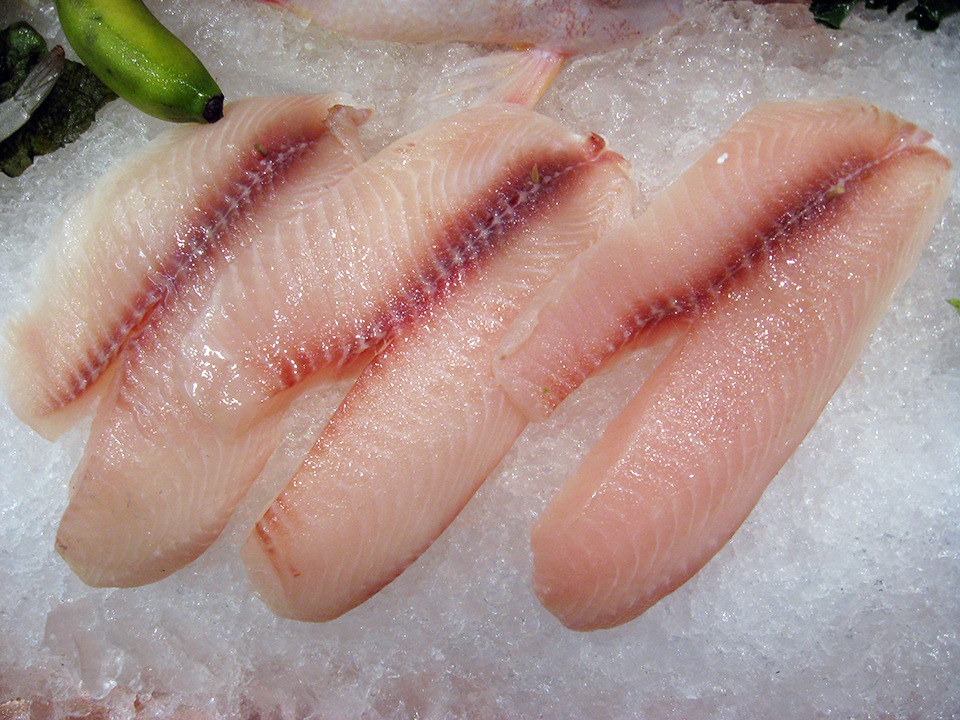
Intelligence
North American markets for fresh tilapia, part 1
A survey of major market sectors to identify further market potential for fresh tilapia found that both big-box retailers and traditional grocery stores offered little room for achieving premium prices for tilapia fillet products.
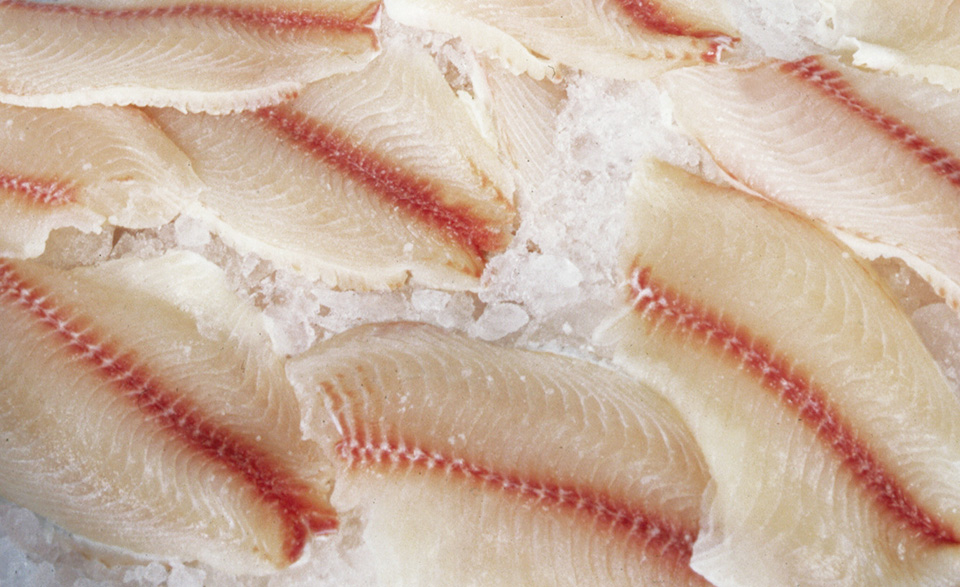
Intelligence
North American markets for fresh tilapia, part 3
An analysis of tilapia processing in which the cost of the fish was not included found that automated cutting of fillets was significantly less expensive than hand cutting.
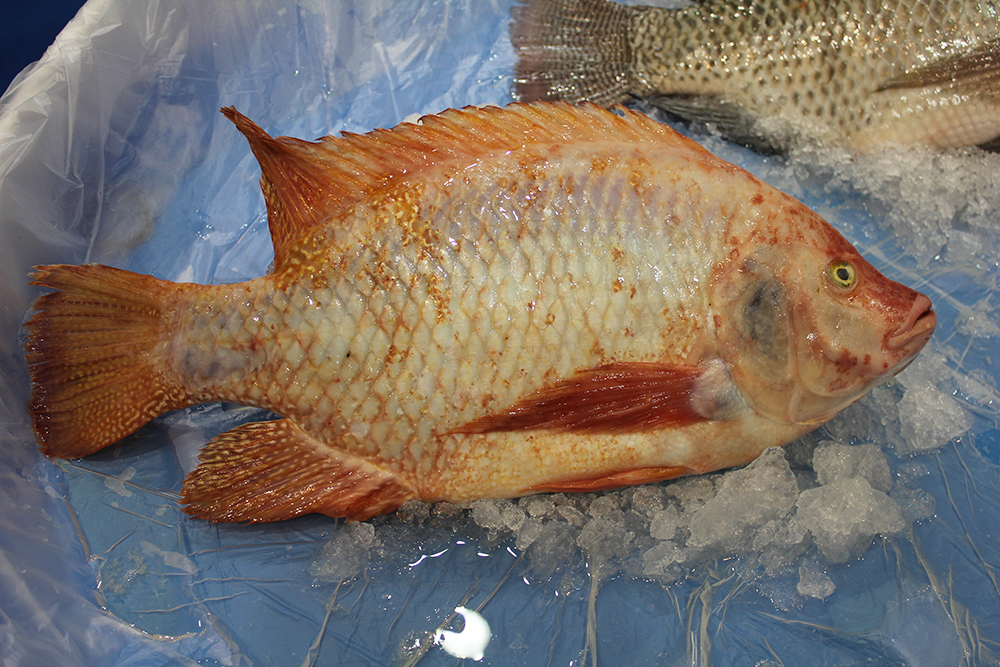
Intelligence
Adding value to tilapia to tap into U.S. market
New markets for tilapia and expansion of existing ones can be created by planning and implementing properly designed geographic strategies to meet discriminating consumer preferences. Low labor costs in most producing countries promotes value-adding by the production of fresh fillets.
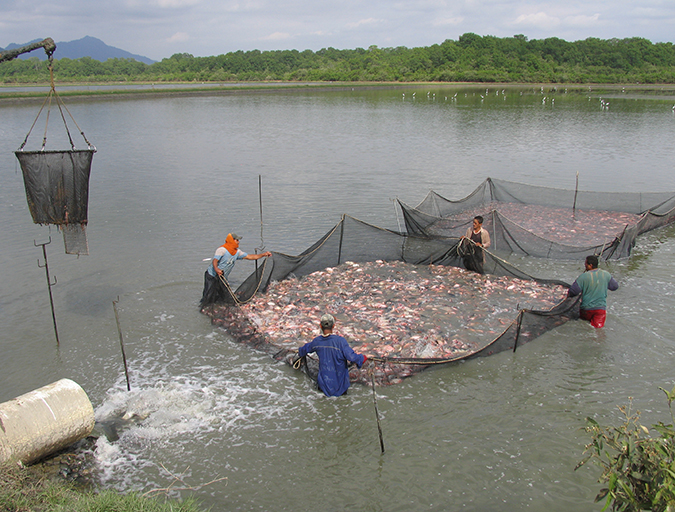
Responsibility
Addressing safety in Latin America’s tilapia supply chain
Over the last decade, the experience gained by many tilapia farmers combined with proficient programs implemented by local governments have significantly improved tilapia production in various Latin American countries like Colombia, Mexico, Ecuador and other important tilapia producers in the region.

